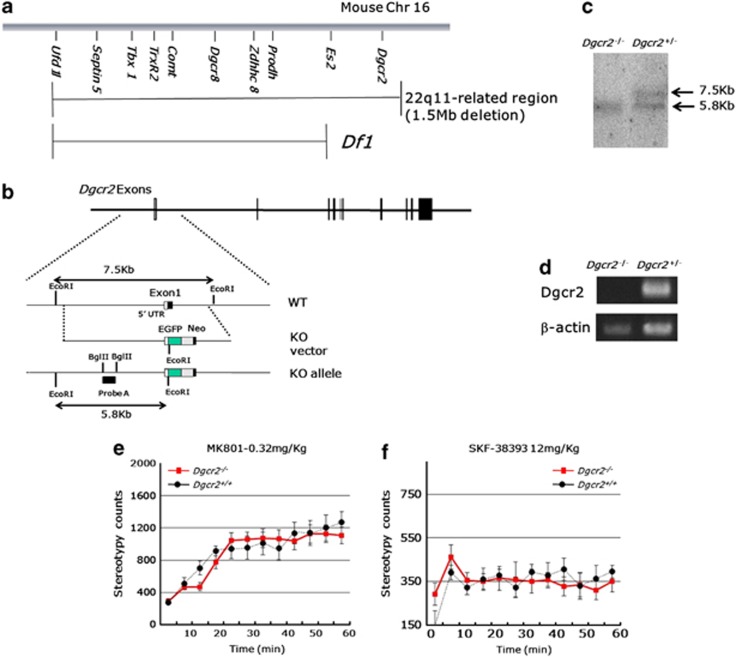Figure 2.
Normal responses of Dgcr2 knockout (KO) heterozygous mice to MK801 and SKF38393. (a) A genetic organization of mouse 22q11-related region on chromosome 16 (Chr 16). The deleted region of Df1/+ mice is indicated by a line below the map. (b) Schematic representation of Dgcr2 gene-targeting strategy. Exon 1 was replaced by a EGFP-Neo cassette by homologous recombination, which is predicted to introduce a premature stop codon in all Dgcr2 transcripts. UTR, untranslated region; WT, wild type. (c) Southern blot analysis of genomic DNA using probe A is shown in (b). The 7.5 and 5.8 kb EcoRI fragments derived from the wild-type and Dgcr2 KO mice, respectively. (d) RT-PCR analysis of Dgcr2 in the brain. (e, f) Dgcr2 heterozygosity did not affect the locomotor responses to MK801 and SKF38393. (e) MK801 (0.32 mg kg−1) and (f) SKF38393 (12 mg kg−1) were injected intraperitoneally and subcutaneously, respectively, to the Dgcr2−/− and control mice. Stereotypy count is shown in 5 min bins for 60 min after drug administration. Values are the mean±s.e.m. for 6–14 male mice.

